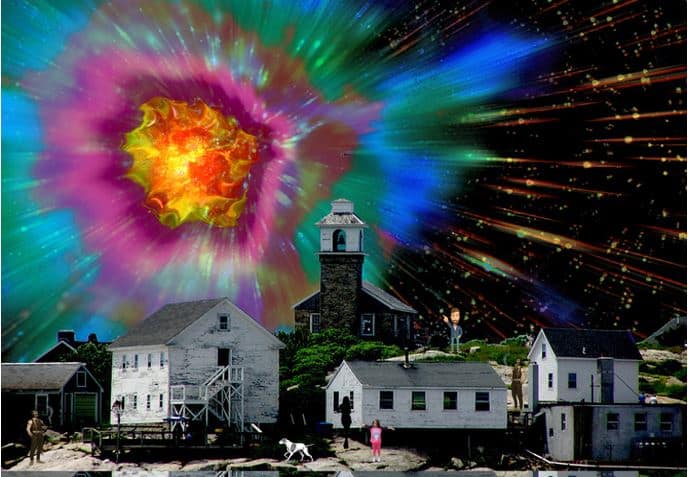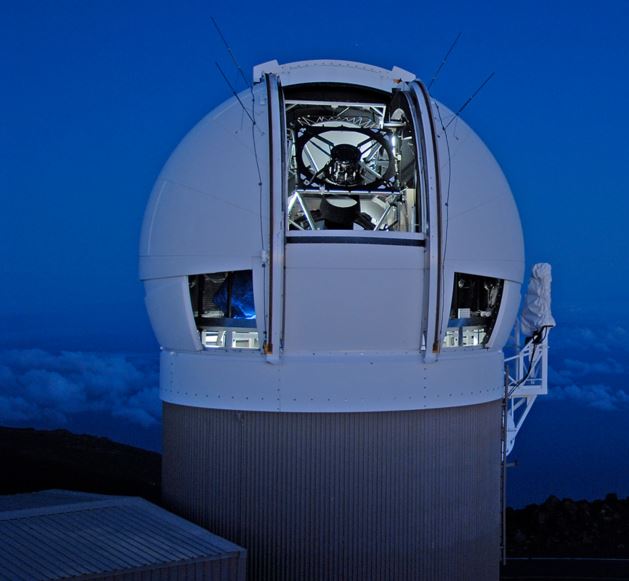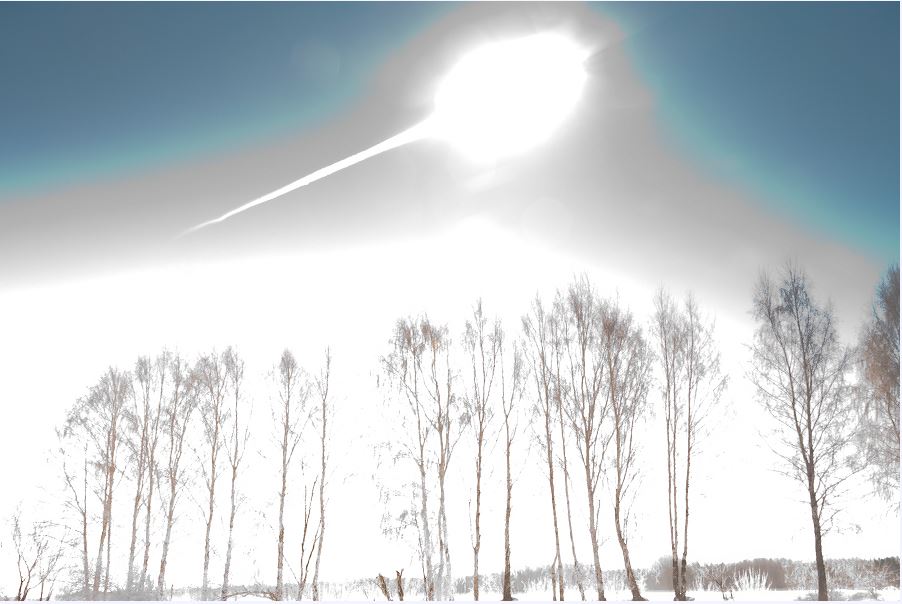NASA has set up an asteroid defense team to protect the Earth from potentially threatening celestial bodies that could strike our planet, damage our environment and even wipe us out, the US Government’s space agency announced last week.
NASA’s Planetary Defense Coordination Office will look after the agency’s projects to find and describe asteroids, as well as co-ordinate effective defense responses to any that threaten to hit Earth. The office remains within NASA’s Planetary Science Division, in the agency’s Science Mission Directorate in Washington.
Scientists today know of over 13,500 near-Earth objects (NEOs) of all sizes. Approximately 1,500 new NEOs are detected each year.
 It would be ironic if the nuclear powers of today, which spent trillions of dollars creating atomic weapons in case of a threat from other humans on Earth, were destroyed by an asteroid from outer space. It would be a tragedy, especially if those trillions could have been used to develop technology that would have prevented that asteroid from hitting us.
It would be ironic if the nuclear powers of today, which spent trillions of dollars creating atomic weapons in case of a threat from other humans on Earth, were destroyed by an asteroid from outer space. It would be a tragedy, especially if those trillions could have been used to develop technology that would have prevented that asteroid from hitting us.
Most Near Earth Objects are large
More than 90% of the NEOs we know of are larger than 1 kilometre (0.62 of a mile) across. NASA is now focusing on finding objects that are 140 metres (450 feet) or larger.
Ten years ago, NASA was tasked with locating 90% of this class of NEOs by the end of 2020. The Agency says it has detected about 25% of them so far.
John Grunsfeld, associate administrator for NASA’s Science Mission Directorate in Washington, said:
“Asteroid detection, tracking and defense of our planet is something that NASA, its interagency partners, and the global community take very seriously.”
“While there are no known impact threats at this time, the 2013 Chelyabinsk super-fireball and the recent ‘Halloween Asteroid’ close approach remind us of why we need to remain vigilant and keep our eyes to the sky.”
 In this image, the main-belt asteroids are in white and the Near Earth Objects are in blue, green and red. If they cross the Earth’s orbit, this means there is a chance of impact with our planet. According to Brian Toon from the University of Colorado, a half-mile-wide asteroid hitting Earth would cause an explosion equal to 100 billion tons of TNT. (Image: cosmosfrontier.com)
In this image, the main-belt asteroids are in white and the Near Earth Objects are in blue, green and red. If they cross the Earth’s orbit, this means there is a chance of impact with our planet. According to Brian Toon from the University of Colorado, a half-mile-wide asteroid hitting Earth would cause an explosion equal to 100 billion tons of TNT. (Image: cosmosfrontier.com)
As well as detecting and tracking potentially-dangerous celestial objects, the office will issue notices of near passes and warnings of any detected potential impacts “based on credible science data.” It will also coordinate with other agencies, including the Department of Defence, FEMA and organizations across the globe.
Lindley Johnson, longtime NEO program executive and now lead program executive for the office, with the title of Planetary Defense Officer, said:
“The formal establishment of the Planetary Defense Coordination Office makes it evident that the agency is committed to perform a leadership role in national and international efforts for detection of these natural impact hazards, and to be engaged in planning if there is a need for planetary defense.”
 The asteroid that hit Earth and caused the extinction of the dinosaurs 65 million years ago was just 6 miles (9.8 km) wide.
The asteroid that hit Earth and caused the extinction of the dinosaurs 65 million years ago was just 6 miles (9.8 km) wide.
Planning Earth’s defense not a new idea
According to NASA, it has been involved in a global planning for planetary defense for some time. However, it is now stepping up its work with other agencies, such as FEMA (Federal Emergency Management Agency) to help organize our planet’s response to any asteroid impacts and the disasters that would follow one.
Nigel Sharp, program director in the agency’s Division of Astronomical Sciences, said:
“NSF (National Science Foundation) welcomes the increased visibility afforded to this critical activity. We look forward to continuing the fruitful collaboration across the agencies to bring all of our resources – both ground-based and space-based – to the study of this important problem.”
Plan to send asteroid boulder into Moon orbit
A first-ever robotic mission is being developed by NASA. The aim is to visit a large near-Earth asteroid, grab a super-heavy, multi-ton boulder from its surface, bring it back and redirect it into a stable orbit around the Moon.
 The Panoramic Survey Telescope & Rapid Response System (Pan-STARRS) 1 on Maui’s Mount Haleakala, Hawaii. It has produced the most near-Earth object discoveries of the NASA-funded NEO surveys in 2015. (Image: Credit: jpl.nasa.gov. University of Hawaii Institute for Astronomy / Rob Ratkowski)
The Panoramic Survey Telescope & Rapid Response System (Pan-STARRS) 1 on Maui’s Mount Haleakala, Hawaii. It has produced the most near-Earth object discoveries of the NASA-funded NEO surveys in 2015. (Image: Credit: jpl.nasa.gov. University of Hawaii Institute for Astronomy / Rob Ratkowski)
Once the boulder is orbiting the Moon, astronauts will explore it and come back to Earth with samples. This is expected to occur in the 2020s.
NASA’s Asteroid Redirect Mission (ARM) is part of its plan to advance the new technologies and spaceflight experience required for a human mission to Mars in the 2030s.
The Agency has identified several candidate asteroids and continues looking for one that could be redirected to close to the Moon in the 2020s. Since announcing the Asteroid Imitative in 2013, NASA’s Near-Earth Object Observation Program has listed over 1,000 near-Earth asteroids discovered by several search teams.
Four of them could be ideal candidates for ARM. NASA researchers expect many more will be discovered over the coming years. Their velocity, size, orbit, speed and spin will be carefully studied before a decision is made on which one to target for the ARM mission.
 Chelyabinsk meteor, a superbolide caused by a near-Earth asteroid, entered Earth’s atmosphere over Russia on 15th February, 2013. It was undetected before its atmospheric entry. The meteor’s blast caused extensive damage. A total of 1,491 people were injured, according to Russian authorities (112 hospitalised). This meteor was only 17 metres wide. (Image: apod.nasa.gov)
Chelyabinsk meteor, a superbolide caused by a near-Earth asteroid, entered Earth’s atmosphere over Russia on 15th February, 2013. It was undetected before its atmospheric entry. The meteor’s blast caused extensive damage. A total of 1,491 people were injured, according to Russian authorities (112 hospitalised). This meteor was only 17 metres wide. (Image: apod.nasa.gov)
ARM is one part of NASA’s Asteroid Initiative, which also includes an Asteroid Grand Challenge, designed to speed up the Agency’s efforts to find potentially hazardous asteroids through non-traditional partnerships and collaborations. The challenge might also help identify viable candidates for ARM.
Asteroids coming towards Earth would be deflected away
If its mission – to capture an asteroid boulder and direct it to a lunar orbit – is successful, the same technology could be used to re-direct an asteroid coming towards Earth, by shifting its trajectory slightly so it does not hit us.
Near Earth Objects are detected by astronomers using ground-based telescopes across the globe, as well as NASA’s NEOWISE infrared telescope, which is in Earth orbit.
Tracking data are provided to a worldwide database maintained by the Minor Planet Center, and sanctioned by the IAU (International Astronomical Union).
Once an NEO is detected, its orbit is precisely predicted and monitored by CNEOS (Center for NEO Studies), part of NASA’s Jet Propulsion Laboratory in Pasadena, California.
What if we cannot stop a collision with Earth?
In case an impact prevention were not possible, NASA would provide expert input into FEMA regarding where the impact was likely to occur and when, as well as its predicted effects. This would give emergency agencies in the US and across the world a better idea of how to respond.
FEMA Administrator Craig Fugate said:
“FEMA is dedicated to protecting against all hazards, and the launch of the coordination office will ensure early detection and warning capability, and will further enhance FEMA’s collaborative relationship with NASA.”
US authorities have been thinking of having a central office to coordinate asteroid detection and mitigation since 2010, when an Ad-Hoc Task Force on Planetary Defense and the NASA Advisory Council suggested that NASA “organize for effective action on planetary defense and prepare to respond to impact threats, [and should] lead U.S. planetary defense efforts in national and international forums.”
In 2014, a NASA Office of Inspector General report concluded that the NEO Observations Program would be more transparent, effective and efficient if it were managed and organized in accordance with current NASA research program requirements.
Video – Asteroid Redirect Mission: Robotic Segment
This concept animation aims to give you an idea of the robotic segment of NASA’s Asteroid Redirect Mission. The Asteroid Redirect Vehicle, using solar power, travels to a large asteroid and grabs a boulder from its surface. It then conducts a ‘gravity tractor’ planetary defense demonstration on the asteroid before taking the captured boulder to a stable orbit around the Moon. Astronauts then explore and sample it.

